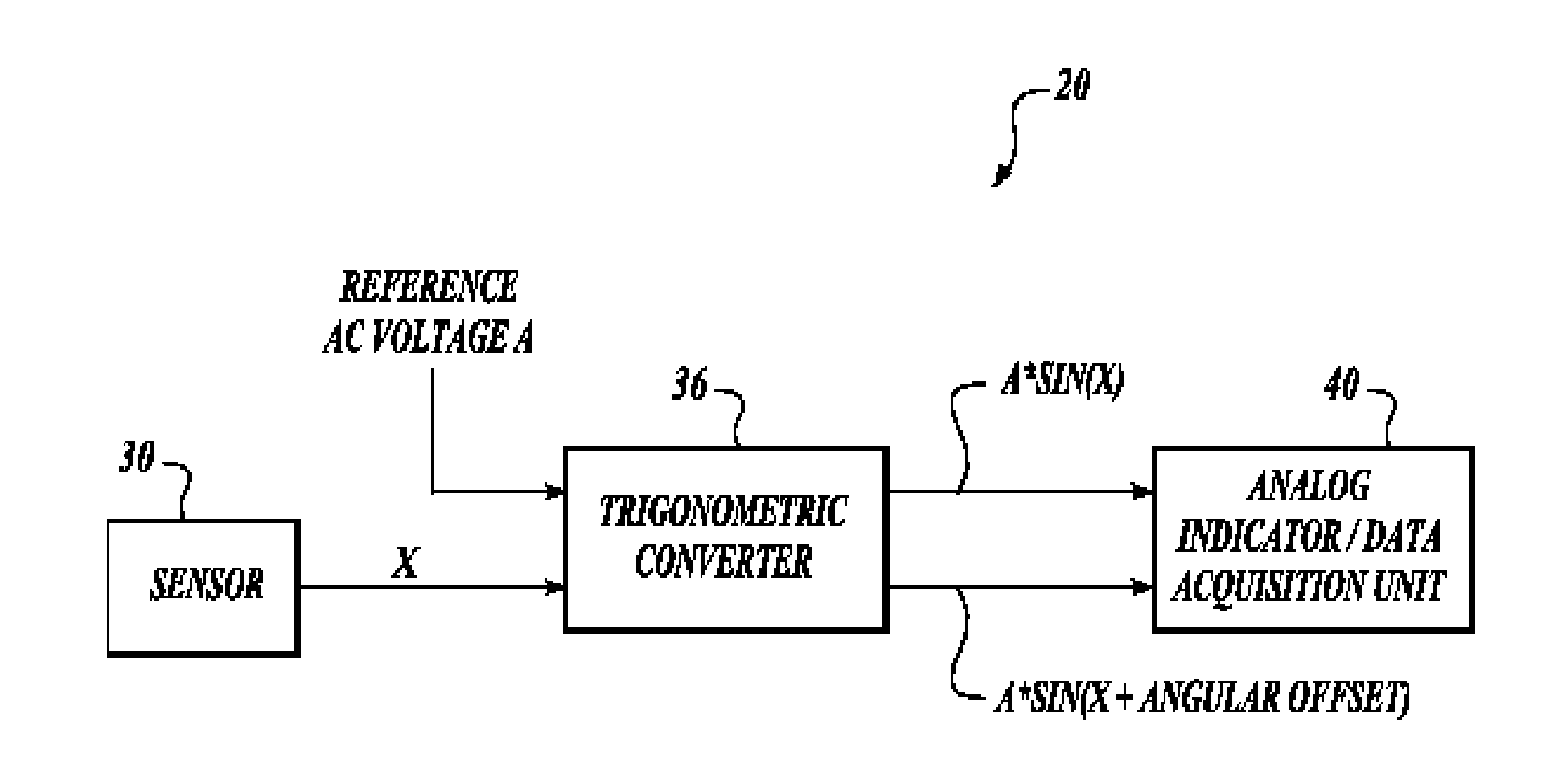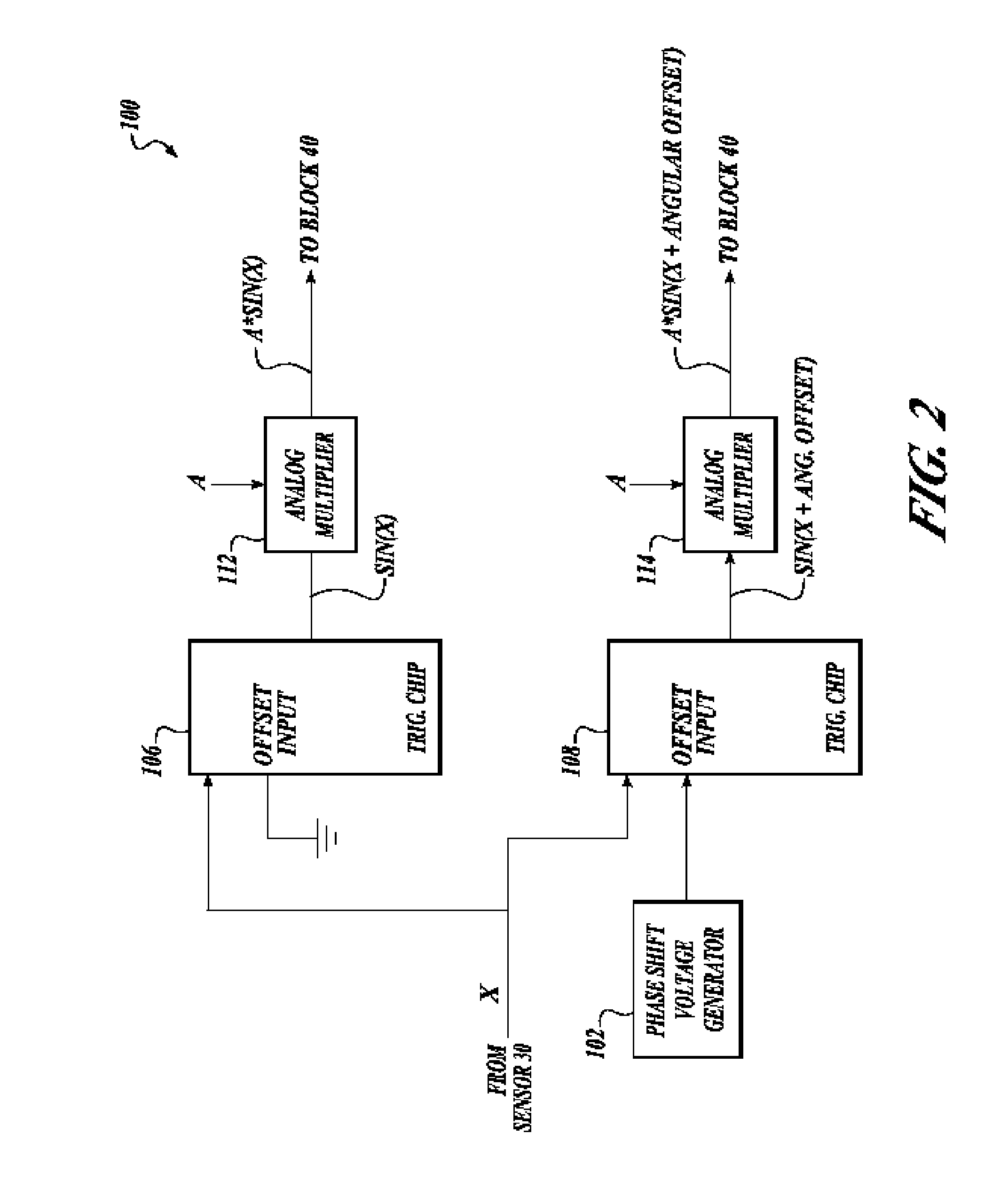Solid-state synchro/resolver converter
a converter and solid-state technology, applied in the field of solid-state synchro/resolver converter, can solve the problems of increasing the difficulty and cost of maintaining these older sensors, prohibitively expensive methods, prohibitively expensive, etc., and achieve the effect of simple and inexpensive conversion
- Summary
- Abstract
- Description
- Claims
- Application Information
AI Technical Summary
Benefits of technology
Problems solved by technology
Method used
Image
Examples
first embodiment
[0011]FIG. 2 illustrates a converter 100 that provides the functions of the trigonometric converter 36 shown in FIG. 1 in accordance with a The converter 100 includes a phase shift voltage generator 102, first and second trigonometric chips 106 and 108, and first and second analog multipliers 112 and 114.
[0012]In one embodiment, the first and second trigonometric chips 106 and 108 are off-the-shelf trigonometric processing chips, such as the AD639 produced by Analog Devices™. More than two trigonometric chips can be included depending on the desired output or a single chip may be configured to include multiple inputs and outputs for producing desired outputs. The analog multipliers 112 and 114 may also be off-the-shelf devices. In one embodiment, the phase shift voltage generator 102 includes a voltage divider, but could be any of a number of different off-the-shelf voltage generators.
[0013]The first and second trigonometric chips 106 and 108 receive the DC voltage value X produced...
second embodiment
[0014]FIG. 3 illustrates a converter 140 that provides the functions of the trigonometric converter 36 shown in FIG. 1 in accordance with a The converter 140 includes an analog to digital (A / D) converter 148, a non-linear transfer function component 150, a digital offset component 152, and first and second multiplying digital to analog (D / A) converters 156 and 158. The components 150 and 152 may be implemented as a field programmable gate array (FPGA) or other functionally comparable device. The A / D converter 148 receives the DC voltage value X from the sensor 30 and converts it into a digital value. The non-linear transfer function component 150 receives the digital output of the A / D converter 148 and converts that linear signal to output a digital representation of a trigonometric signal to the first D / A multiplier 156 and the digital offset component 152. Equation No. 1 is an example of a non-linear transfer function that is utilized by the component 150 to generate the digital ...
PUM
 Login to View More
Login to View More Abstract
Description
Claims
Application Information
 Login to View More
Login to View More - R&D
- Intellectual Property
- Life Sciences
- Materials
- Tech Scout
- Unparalleled Data Quality
- Higher Quality Content
- 60% Fewer Hallucinations
Browse by: Latest US Patents, China's latest patents, Technical Efficacy Thesaurus, Application Domain, Technology Topic, Popular Technical Reports.
© 2025 PatSnap. All rights reserved.Legal|Privacy policy|Modern Slavery Act Transparency Statement|Sitemap|About US| Contact US: help@patsnap.com



